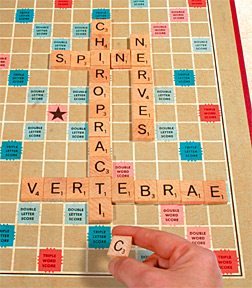Whole-Body Health: Stay Connected
By DR. Kevin Wong
The connection between your muscles, bones, and the spine and spinal nerves is an important one, to say the least; in fact, ensuring that connection is maintained is essential to lifelong whole-body health.
The concept of "pain" has confused, frustrated and fascinated human beings throughout our history. Obviously as our life spans have increased, so have the
types and severity of pain that we experience. Not only can pain be an issue for people at any age, but it also can be located in any part of the body.
We are a symptom-based society when it comes to pain. This means that until we feel pain or symptoms related to pain, like numbness or tingling, we don't seek treatment. Some individuals wait months or even years to deal with their pain.
There is a new movement that is sweeping this great country of ours. It involves the journey you take to understand what is actually causing your pain. We no longer blindly accept it when a health care provider tells us to get a vaccination, take medication or have surgery. We live in a world where information is at the touch of our fingertips, and with it comes easier means to investigate and learn all we can about ourselves and any possible health problems. The time has come for us to take responsibility for our pain and what our treatment options are.
The human body does seem complex at first glance. Yet amazingly enough, we can identify some simple relationships that allow us more clarity on how the body works and how each body part is related. Let's take a closer look.
Musculoskeletal Health Starts With a Healthy Spine
 One of the most important relationships we have in the body is between the muscles, bones and the spine. Musculoskeletal means the muscles and bones of the skeleton - all the bones, not just the big ones.
One of the most important relationships we have in the body is between the muscles, bones and the spine. Musculoskeletal means the muscles and bones of the skeleton - all the bones, not just the big ones.
Take a moment to look at your body. Quickly glance at your arms, hands, hips, legs and feet. Do you realize that you have approximately 640 muscles that are responsible for moving the 206 bones in your body? How do you get these muscles to move those bones? It has to do with the way the spinal cord and the nerves send information out to the body. It might surprise you to know that many common ailments that we experience, like headaches, lower back pain and shoulder pain, can have links to the muscles, bones and spinal nerves.
The spine is made up of 29 vertebrae that are divided up by specific regions of the body: cervical, thoracic, lumbar and sacrum. Think of the spine as a protective housing for your spinal cord that lives in the center of the vertebrae. At every level of the spine, nerves branch off of the spinal cord, move past the vertebrae and outward to supply the different parts of the body.
Furthermore, as the nerves branch off from the spine, certain ones move out farther and farther, going all the way to the hands and feet. While a nerve is traveling, it must repeatedly pass by or around different bones. It stands to reason that the position of the bones is important. If the bones are not in correct position, or "out of alignment," the nerves will be compromised.
An easy way to remember how the body works is that the vertebrae, spinal cord and nerves affect everything from your toes all the way up to your nose. As an example, migraines and other headaches can be caused when the spinal vertebrae in the neck region are misaligned. This causes pressure on the nerves as they branch off of the spinal cord and move through the vertebrae out to the muscles of the neck and head. This compromised nerve flow also affects the circulation of blood to and from the area. All of these factors play an important role in headaches.
A study by Tuchin, et al., results of which were published in the Journal of Manipulative and Physiological Therapeutics (JMPT), a peer-reviewed research journal, found that chiropractic care can dramatically help migraine sufferers. One in five participants reported a 90 percent reduction in migraines and half reported a significant improvement in migraine severity following two months of treatment.

